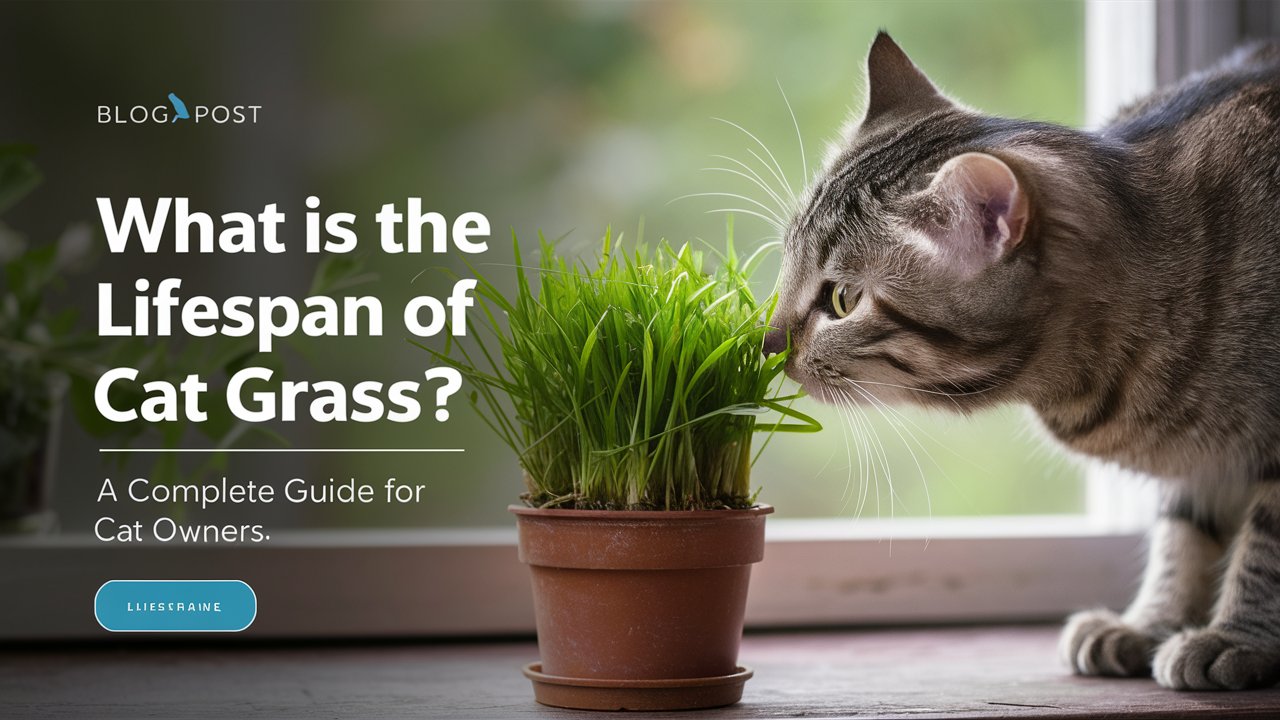As a cat owner, you may have heard about the benefits of cat grass and might even have a patch growing at home. Cat grass provides numerous benefits for your feline friend, from aiding digestion to satisfying their natural urge to chew plants. However, one question that often arises is, “What is the lifespan of cat grass?” In this blog post, we will dive deep into everything you need to know about cat grass, its lifespan, and how to maximise its longevity.
What Is Cat Grass?
Cat grass is a general term that refers to a mixture of grass varieties, typically oats, wheat, rye, and barley. These grasses are safe for cats to nibble on and can be grown indoors or outdoors in pots. Many cat owners grow cat grass to provide their pets with a natural and safe alternative to houseplants, which can often be toxic to cats.
Why Do Cats Eat Grass?
It’s believed that cats eat grass to help with digestion, induce vomiting to clear their digestive tract, or simply out of curiosity. Unlike other plants that can be harmful, cat grass is non-toxic and offers a healthy way for your cat to satisfy their plant-chewing instincts.
Lifespan of Cat Grass: Key Factors
The lifespan of cat grass varies depending on several factors, including the type of grass, growing conditions, and how frequently your cat consumes it. On average, cat grass can last anywhere from 1 to 3 weeks before it begins to wilt or die. However, with proper care, you can extend its lifespan and ensure your feline gets the most out of it.
Here are the key factors that affect the lifespan of cat grass:
- Growth Conditions
The growth environment plays a crucial role in determining how long cat grass will last. Cat grass thrives in indirect sunlight and prefers a cool, well-ventilated space. Too much direct sunlight or heat can cause the grass to wilt more quickly. Keep the grass moist but not overwatered, as soggy soil can lead to root rot and reduce its lifespan. - Type of Grass
The type of grass you choose can also influence its lifespan. Wheatgrass, for example, tends to have a slightly shorter lifespan than oat grass. Mixing different grass types can give your cat a more diverse experience while slightly prolonging the life of the grass. - Cat Usage
If your cat is an avid chewer, the lifespan of the grass may decrease. Cats tend to eat the top part of the grass, and once it’s chewed down to the base, it may not regrow effectively. To prolong the grass’s life, you may want to rotate pots of cat grass, allowing one to recover while your cat chews on another. - Maintenance and Care
Proper maintenance is essential for extending the lifespan of cat grass. Trimming the grass regularly can prevent it from becoming too long and falling over, which could lead to wilting. Make sure to water it adequately and keep an eye out for signs of fungal growth or pest infestations that can damage the plant.
How to Extend the Lifespan of Cat Grass
Although the average lifespan of cat grass is relatively short, there are several ways to prolong its life and get the most value from it.
- Grow in Small Batches
Instead of growing a large patch all at once, consider planting cat grass in small, staggered batches. This allows you to always have a fresh supply ready for your cat. Once one batch begins to wilt, you’ll have another batch already growing. - Rotate Pots
Rotating pots can help preserve the lifespan of your cat grass. When your cat is done chewing one pot, switch it out for another and give the first pot time to recover. This method works particularly well if you grow cat grass in separate, small containers. - Proper Watering Techniques
Watering is one of the most critical aspects of maintaining cat grass. Be careful not to overwater, as this can lead to mould or root rot, which significantly shortens the plant’s life. The soil should remain slightly moist, but never soaked. Additionally, using a pot with drainage holes can prevent water from accumulating at the bottom. - Use Quality Soil
The quality of the soil can have a significant impact on how long your cat grass lasts. Use well-draining potting soil that is rich in nutrients to give your grass the best chance of survival. Avoid using garden soil, as it may contain pests or diseases that can affect the plant. - Give Adequate Light
While cat grass doesn’t need much sunlight, placing it in a location with bright, indirect light will help it grow healthy and vibrant. Avoid placing it in direct sunlight, as this can cause the grass to dry out and die prematurely.
Signs That Your Cat Grass Is Dying
No matter how well you care for your cat grass, it will eventually reach the end of its life cycle. Knowing the signs that your cat grass is dying can help you decide when it’s time to replace it. The common indicators include:
- Wilting and Browning: The grass will start to turn brown and lose its vibrant green colour.
- Slow Growth: If the grass stops growing despite proper care, it may be nearing the end of its lifespan.
- Mould or Fungal Growth: White or grey mould growth on the soil’s surface is a sign that the grass is unhealthy and may die soon.
When you notice these signs, it’s time to plant a new batch for your furry friend.
Conclusion: Managing the Lifespan of Cat Grass
So, what is the lifespan of cat grass? With proper care, your cat grass can last up to 3 weeks. However, by following the tips in this guide—such as rotating pots, maintaining the right growth conditions, and practising proper watering techniques—you can maximise the lifespan of cat grass, ensuring your cat has a steady supply of healthy greens.
Growing cat grass at home is a simple, yet effective way to improve your cat’s well-being. While the plant’s lifespan is relatively short, a little planning and care can ensure your cat always has access to fresh, safe greenery.
FAQs
Here are five FAQs about the lifespan of cat grass:
- How long does cat grass typically last?
On average, cat grass lasts between 1 to 3 weeks. However, with proper care such as regular watering, indirect sunlight, and rotating pots, its lifespan can be extended. - Can I regrow cat grass after my cat has chewed it down?
In most cases, once the top part of the grass has been eaten, it won’t regrow. It’s best to plant new seeds or rotate batches to ensure a continuous supply. - How can I make my cat grass last longer?
To extend its life, keep the grass in indirect sunlight, water it properly, trim it regularly, and avoid overwatering to prevent mould or root rot. - What should I do if my cat grass starts wilting or turning brown?
Wilting or browning is a sign that your cat grass is nearing the end of its lifespan. At this point, it’s best to replace it with a fresh batch. - Is it safe for my cat to eat cat grass every day?
Yes, cat grass is safe for daily consumption in moderation. It provides dietary fibre and helps with digestion, but if your cat eats too much or vomits frequently, consult your vet.

